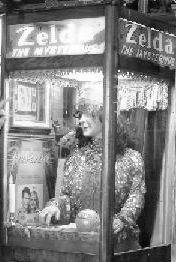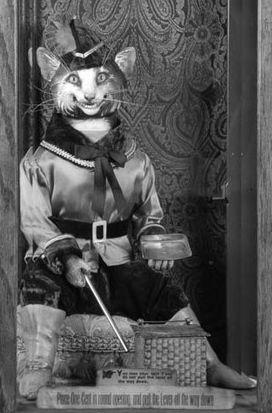
| Online Judge | Online Exercise | Online Teaching | Online Contests | Exercise Author |
|
F.A.Q Hand In Hand Online Acmers |
Best Coder beta VIP | STD Contests DIY | Web-DIY beta |
Pencils from the 19th Century
Time Limit: 2000/1000 MS (Java/Others) Memory Limit: 32768/32768 K (Java/Others)Total Submission(s): 223 Accepted Submission(s): 126
Problem Description
Before "automaton" was a theoretic computer science concept, it meant "mechanical figure or contrivance constructed to act as if by its own motive power; robot." Examples include fortunetellers, as shown above, but could also describe a pencil seller, moving pencils from several baskets to a delivery trough.

On National Public Radio, the Sunday Weekend Edition program has a "Sunday Puzzle" segment. The show that aired on Sunday, 29 June 2008, had the following puzzle for listeners to respond to (by Thursday, 3 July, at noon through the NPR web site):

For our purposes, we will expand on the problem, rather than just getting 20 pencils for 20 cents (which is shown in the sample output below). The input file will present a number of cases. For each case, give all solutions or print the text "No solution found". Solutions are to be ordered by increasing numbers of four-cent pencils.

On National Public Radio, the Sunday Weekend Edition program has a "Sunday Puzzle" segment. The show that aired on Sunday, 29 June 2008, had the following puzzle for listeners to respond to (by Thursday, 3 July, at noon through the NPR web site):
- From a 19th century trade card advertising Bassetts Horehound Troches, a remedy for coughs and colds: A man buys 20 pencils for 20 cents and gets three kinds of pencils in return. Some of the pencils cost four cents each, some are two for a penny and the rest are four for a penny. How many pencils of each type does the man get?

For our purposes, we will expand on the problem, rather than just getting 20 pencils for 20 cents (which is shown in the sample output below). The input file will present a number of cases. For each case, give all solutions or print the text "No solution found". Solutions are to be ordered by increasing numbers of four-cent pencils.
Input
Each line gives a value for N (2 <= N <= 256), and your program is to end when N = 0 (at most 32 problems).
Output
The first line gives the instance, starting from 1, followed by a line giving the statement of the problem. Solutions are shown in the three-line format below followed by a blank line, or the single line "No solution found", followed by a blank line. Note that by the nature of the problem, once the number of four-cent pencils is determined, the numbers of half-cent and quarter-cent pencils are also determined.
Case n:
nn pencils for nn cents
nn at four cents each
nn at two for a penny
nn at four for a penny
Sample Input
10 20 40 0
Sample Output
Case 1: 10 pencils for 10 cents No solution found. Case 2: 20 pencils for 20 cents 3 at four cents each 15 at two for a penny 2 at four for a penny Case 3: 40 pencils for 40 cents 6 at four cents each 30 at two for a penny 4 at four for a penny 7 at four cents each 15 at two for a penny 18 at four for a penny
Source
| Home | Top |
Hangzhou Dianzi University Online Judge 3.0 Copyright © 2005-2025 HDU ACM Team. All Rights Reserved. Designer & Developer : Wang Rongtao LinLe GaoJie GanLu Total 0.000000(s) query 1, Server time : 2025-04-18 06:59:09, Gzip enabled |
Administration |